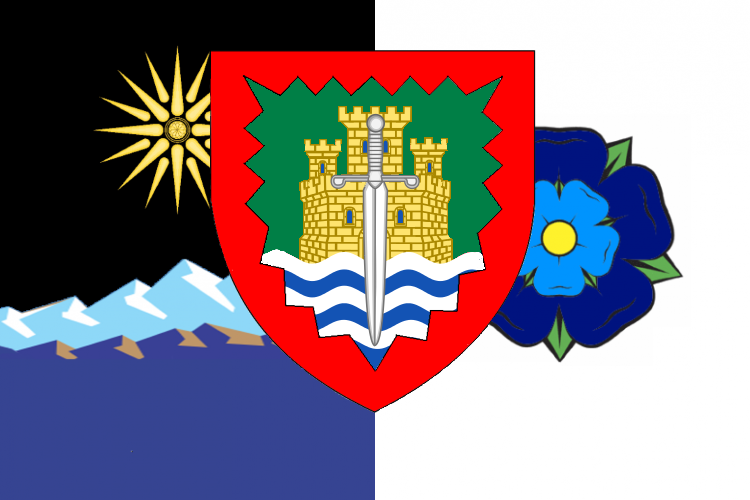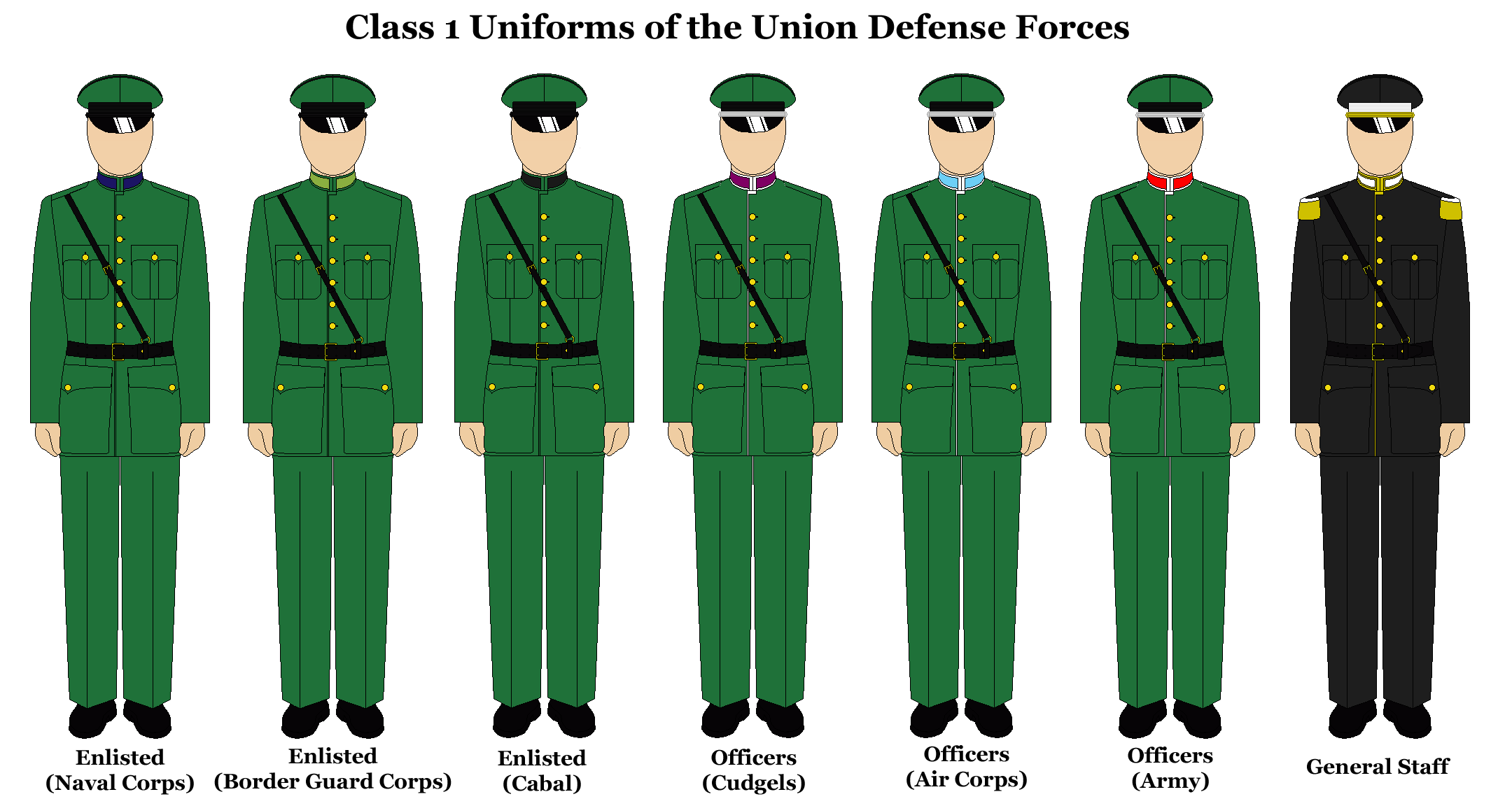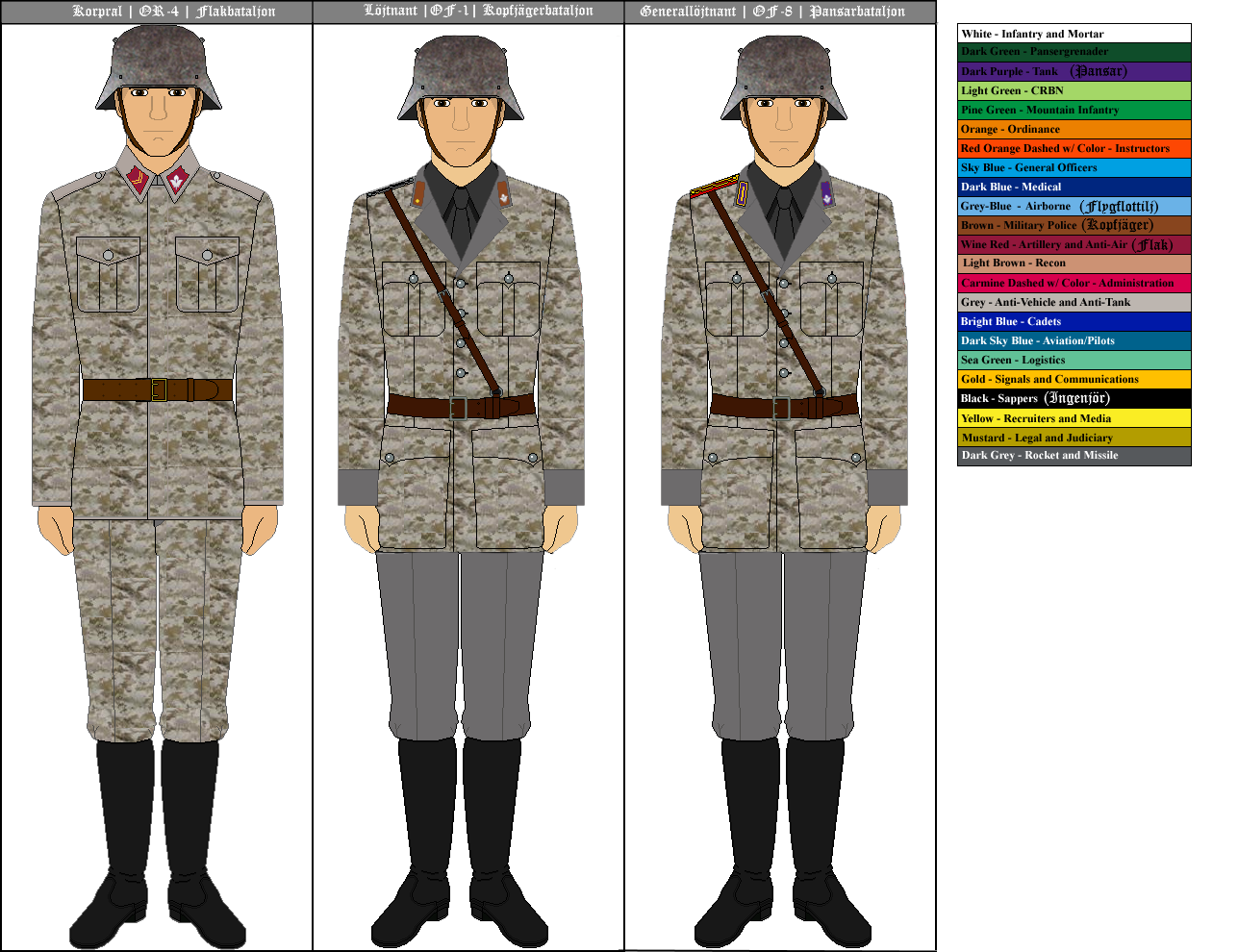Union Defence Force

| |||
| Active: | 1508–1613 & 1629– | ||
| Motto | Pax in Bello | ||
| In use by: | Imperial Forces | ||
| Allegiance: | Elwynn | ||
|
| |||
| Type: | Defence Force | ||
| Size: |
| ||
| Nickname: | None yet | ||
| Commander: | King Noah | ||
|
| |||
| Allies | |||
| Opponents | |||
Under the Martial Code of Shireroth, the Union Defence Force (UDF) exists to defend the territorial integrity of the Elwynnese Union as an Imperial State within the Imperial Republic of Shireroth. The UDF is held in strict subordination to the King of the Lands of the Two Sacred Rivers and owes Him abolute obedience.
Contents
History
The UDF has been through various incarnations but traces its ancestry back to the feudal militias raised by Elwynn to fight in the War of Vengeance and the Elwynnbrigaden which fought in the War of Jeremy's Nose and the Kai Aphmyarkaiph before being re-established as the Elwwehr in the wake of the White Lily Revolt. The UDF expanded dramatically in size during the era of Elwynnese independence and emerged as a political power broker in the tumultuous years prior to the establishment of the Coordinated State. It was abolished after the Communist Revolution of 1613 and replaced by various ad hoc revolutionary groups and a People's Militia. Following the Kalirion Restoration the UDF was re-established by decree of the Steward of Elwynn, Hallbjörn Haraldsson, in 1629 AN.
Duties, Functions, and Responsibilities
The UDF is, aside from its most noble and honourable duty of the defence of the Flower of the North against internal and external aggressors as well as other enemies, by law also charged with the following duties, functions, and responsibilities:
- the furtherance of, where applicable and allowed, the foreign and domestic policies of the King;
- the protection of the interests of the Elwynnese Union, whether in the Elwynnese Union itself or elsewhere;
- the provision of executive assistance to maintain public order and security, to prevent and interrupt terrorist acts, and otherwise to protect society at large;
- the provision of assistance in rescue operations by contributing equipment, personnel and expert services;
- the participation in assisting another country in case of a terrorist attack, natural disaster, major accident or other similar occurrence;
- the protection and advancement of the international rule of law;
- the provision of any public service.
Culture
As a force recruited from across the Twelve Peoples of Elwynn communication within the ranks of a heterogeneous force was an acute issue from the earliest days of the UDFs establishment. As a consequence the UDF evolved its own distinctive dialect or Army Crandish formed of a creole of the Norse and Froyalanish languages leavened with a heavy dose of Babkhi command words.
Every year the UDF solemnly, and with due pomp and circumstance, observes the Battle of Vijayanagra, which took place during the dark days of the War of Vengeance and in which the brave Count Harald of Araxion and his valiant Huskarls threw back the Antyan invasion fleet, as both a grave and proud reminder of their first and foremost duty.
Table of Organisation
- Generalstaf
- Kungliga Krigsacademien / Royal Academy of Warfare
- Försvarshögskolan / Defence College
- Kungliga Krigshögskolan (KHS) / Royal College of (Land) Warfare
- Artilleriläroverket / Artillery School
- Flygkrigshögskolan (FKHS) / Air Force War College
- Kungliga Sjökrigshögskolan / Royal Naval Staff College
- Combat Support Services Corps (CSSC)
- Territorial Defence Corps
- 1st Division (Elwmacht) (1 Div Elw)
- 2nd Division (The Huskarls) (2 Div Hus)
- 10th Division (The Zjandarian Guards) (10 Div Zja)
- 11th Division (The Far Reaches) (11 Div Far)
- Union Aerospace Corps (UAC)
- 4th Tactical Aviation Division (4 TA Div)
- 5th Tactical Aviation Division (5 TA Div)
- 6th Logistics-Airlift Division (6 L-A Div)
- 7th Anti-Air Defence of the Nation Division (7e AADN Div)
- 8th Strategic Operations Division (8 Strat-Op Div) [Southron Barrage]
- Union Fleet Maritime Corps (UFMC)
- Elwkustbevakning (ElwKb)
- Elwmarine (ElwM)
- 9th Maritime Reconnaissance Division (9 MR Div)
- 12th Naval Division (12 Div Nav)
- Union Intelligence Corps (UIC)
- Union Medical Corps (UMC)
- Kungliga Krigsacademien / Royal Academy of Warfare
Manpower
UDF Manpower: [919,892 personnel]
Territorial Defence Divisions
94,892
Gendarmerie Division
25,000
Auxiliary Service Corps
200,000
Non-Combatant Corps
600,000
Ranks
(Officer Ranks)
- OF-10 (Överbefälhavaren, ÖB Supreme Commander)
- OF-9 (General, Amiral)
- OF-8 (Generallöjtnant, Viceamiral)
- OF-7 (Generalmajor, Konterameral)
- OF-6 (Brigadgeneral, Flottiljamiral)
- OF-5 (Överste, Kommendör)
- OF-4 (Överstelöjtnant, Kommendörkapten)
- OF-3 (Major, Örlogskapten)
- OF-2 (Kapten)
- OF-1 (Löjtnant)
(Other Ranks)
- OR-6 (Förste Sergeant, Förste- styrman,konstapel,maskinist)
- OR-5 (Sergeant)
- OR-4 (Korpral)
- OR-3 (Vice korpral)
- OR-2 (Menig 1kl)
- OR-1 (Menig)
Uniforms

(Design: Tarjei Einhornsson)

(Design: Thorgils Tarjeisson)